An exhibition on the Macchiaioli in Gubbio: from November 4, 2023 to March 3, 2024, the Logge dei Tiratori in the Umbrian city will host the exhibition I Macchiaioli e la pittura en plein air tra Francia e Italia, a new stage in an exhibition project that had enlivened the Villa Reale in Monza at the beginning of the year and is dedicated to one of the most important and most celebrated movements of the Italian cultural scene in the second half of the 19th century. It proposed avant-garde pictorial research that in many ways anticipated, with surprising modernity, those later proposed by the French Impressionists. The exhibition, curated by Simona Bartolena, analyzes the Macchiaioli revolution within a European context and in particular its relationship with France, focusing on the technical innovations that the fathers of en plein air art developed on the theme of landscape and genre painting.
The five sections investigate the protagonists and the evolution of this important movement, fundamental to modern Italian painting: from the birth of en plein air painting to the artistic legacy of the macchia, a movement that took shape around the tables of Caffè Michelangelo in Florence. The exhibition presents more than 70 works, mostly from private collections and therefore hardly visible to the public, as well as from some important public institutions. The Gubbio exhibition thus becomes an opportunity to admire them in an exclusive way.
The exhibition is produced and realized by Navigare Srl in co-production with Diffusione Cultura with the patronage of the Municipality of Gubbio and the support of the Perugia Foundation, in collaboration with Land, ViDi cultural and ONO contemporary art. Partners of the event are the Italian Design Institute of Perugia, Perugia Academy of Fine Arts “Pietro Vannucci,” University of Arts and Crafts Foundation, with the contribution of travel partner Trenitalia. Media partners are Radio Kiss Kiss, Perugia Today, Terni Today and Sky Arte.

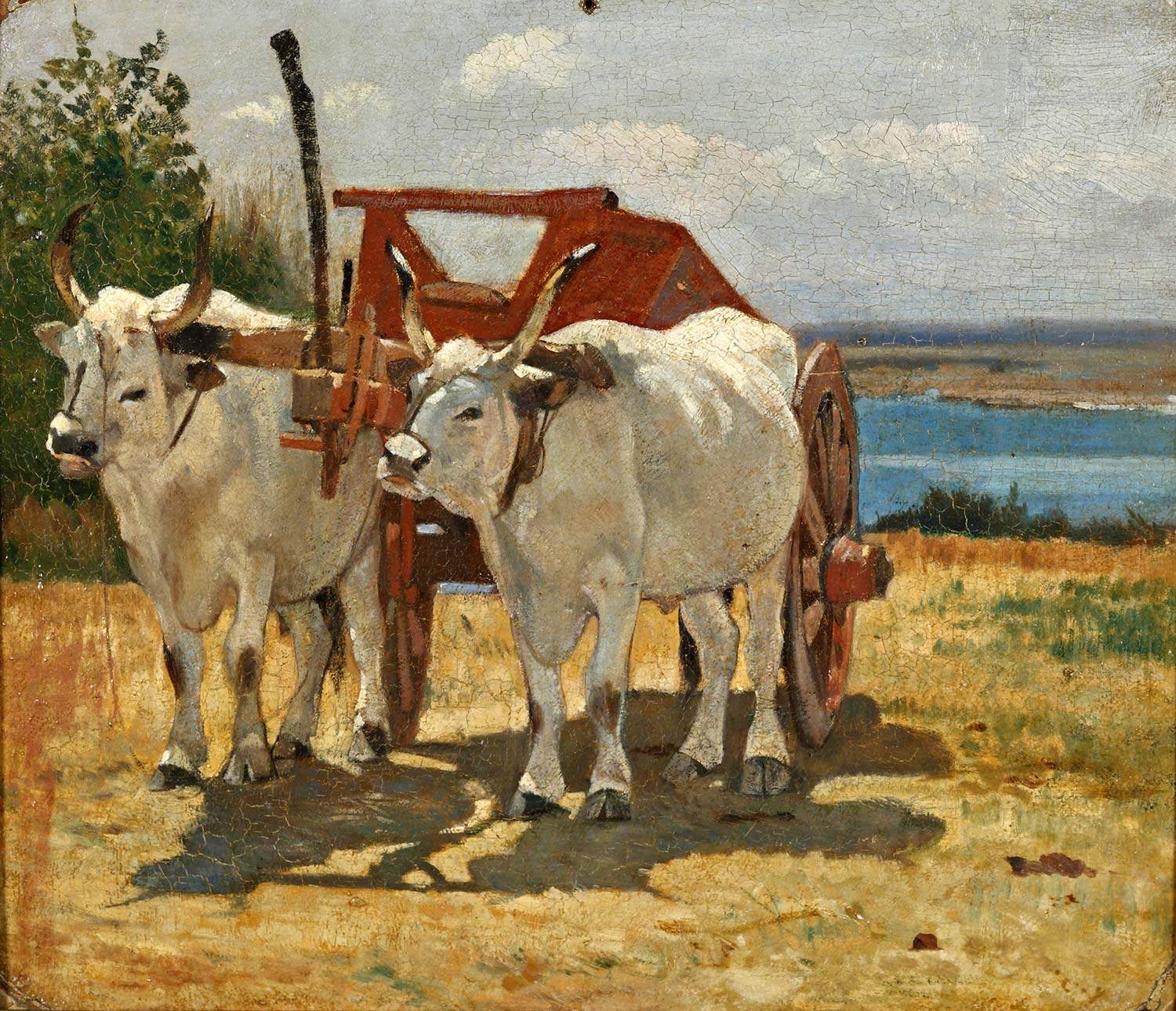
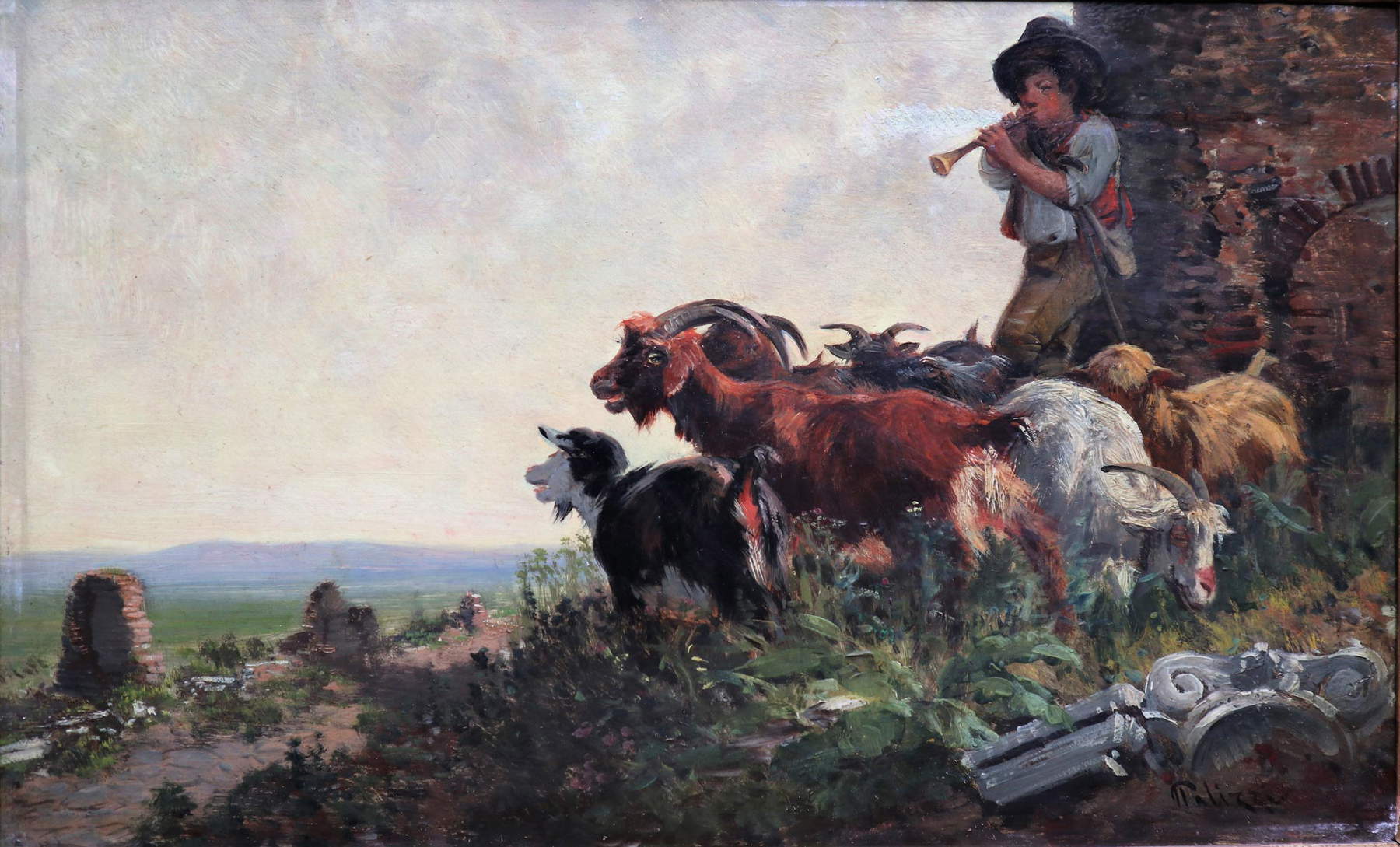
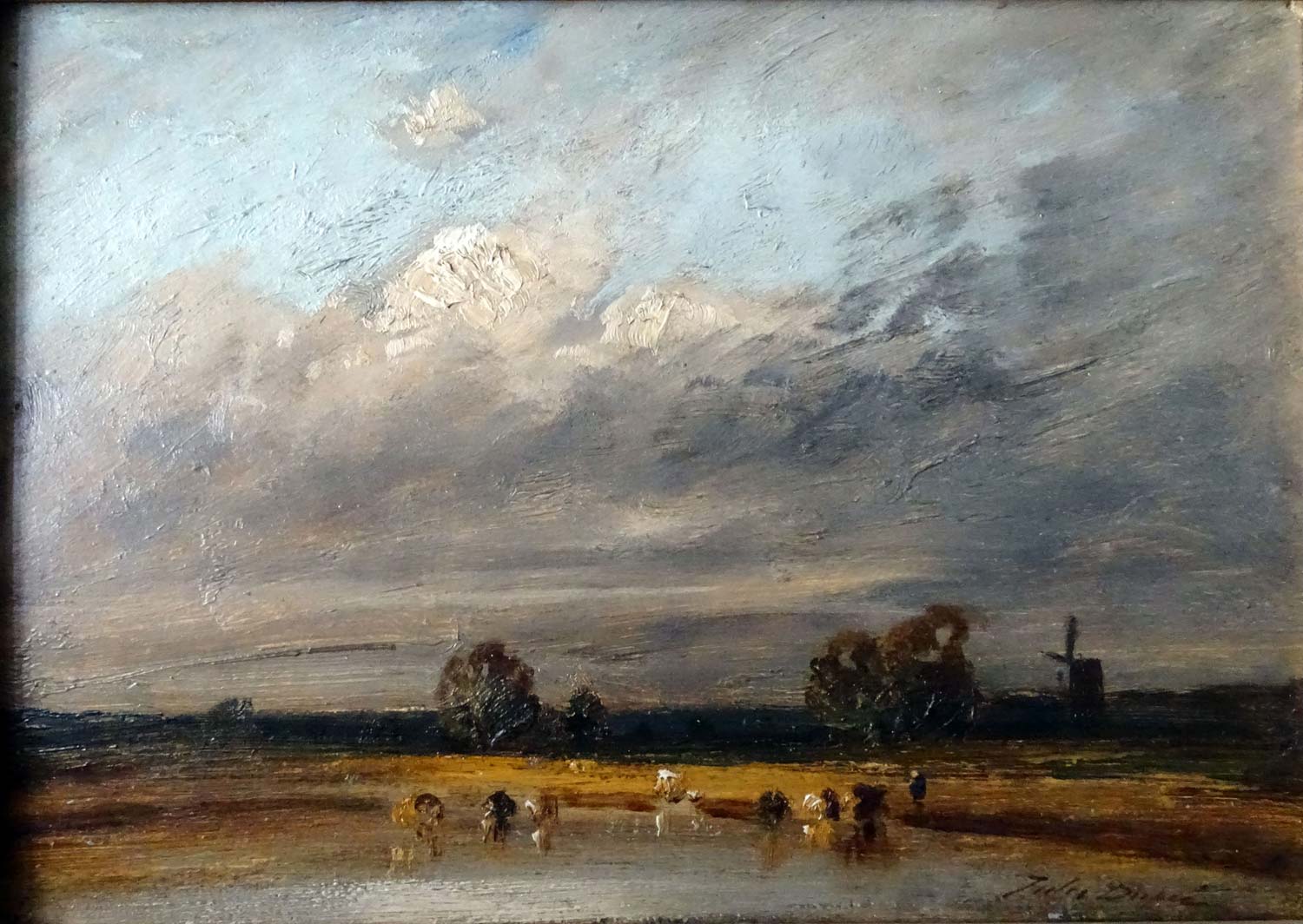
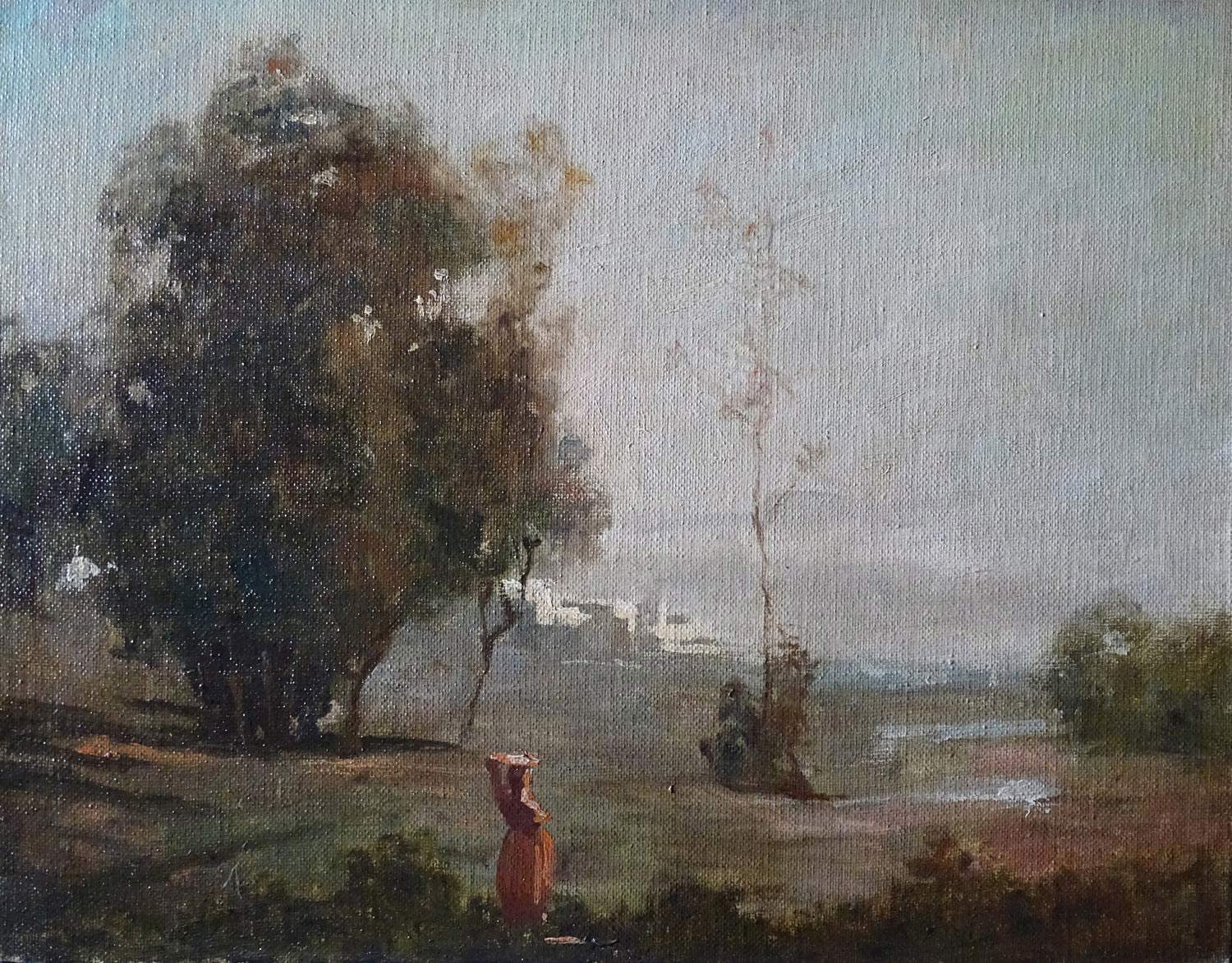
“The exhibition,” says curator Simona Bartolena, "will allow visitors to immerse themselves in a very lively historical and cultural moment, from which the ferments of revolt of these new painters will emerge, along with their strong artistic and human personalities. The French art scene of the 19th century is well known and always highly appreciated by visitors to major exhibitions. The Italian nineteenth century, on the other hand, is still little told. Precisely for this reason it still reserves numerous reasons for interest, surprising for its complexity and the extraordinary quality of the artists. An evocative tale will unfold in Gubbio, bringing to life a golden two decades of Italian art, between the experience at Barbizon and the tasty caricatures made at Café Michelangelo, between scenes in the fields and an afternoon in Montemurlo. These are mostly small works, suitable for being transported precisely en plein air, sometimes even on improvised supports that conceal personal anecdotes and stories. Such as a splendid painting by Giovanni Fattori, for example, painted behind the lid of a cigar box. These are works that look like small studies, as if barely sketched, and have all the flavor of paintings made on the fly, precisely from life. The climate in which the Macchia was born was goliardic, made up of friends and personalities from all over Italy who met in Florence and found inspiration here for their own little revolution. The viewer of the exhibition will discover, through quotations, excerpts from written accounts, biographical insights and technical explanations, the true art-historical importance of Macchiaioli painting, too often known only for the pleasantness of its tablets."
The exhibition’s narrative begins in the Florence of the second half of the 19th century: the Tuscan city was one of the most active cultural capitals in Europe and soon became (first thanks to the Grand Duke’s moderate policies and then because of its pivotal role in the events of unification) a point of reference for many intellectuals from all over Italy. Around the tables of a city café, the Michelangelo, gathered a group of young artists united by the spirit of rebellion against the academic system and the desire to paint the sense of truth. The name “Macchiaioli,” first used in a derogatory sense by critics, was later adopted by the group itself as it perfectly embodied the philosophy of their works. Special attention will be given in the exhibition to the relationship with the Barbizon School, as a fundamental reference in the birth of en plein air landscape painting. Therefore, in addition to masterpieces signed by the main exponents of the Macchiaioli movement, the exhibition will display some works created by artists such as Corot, Daubigny, Troyon, and Rousseau, as well as by the Italians Giuseppe and Filippo Palizzi, to explore the theme of landscape and the outdoor scene before the birth of Impressionism.
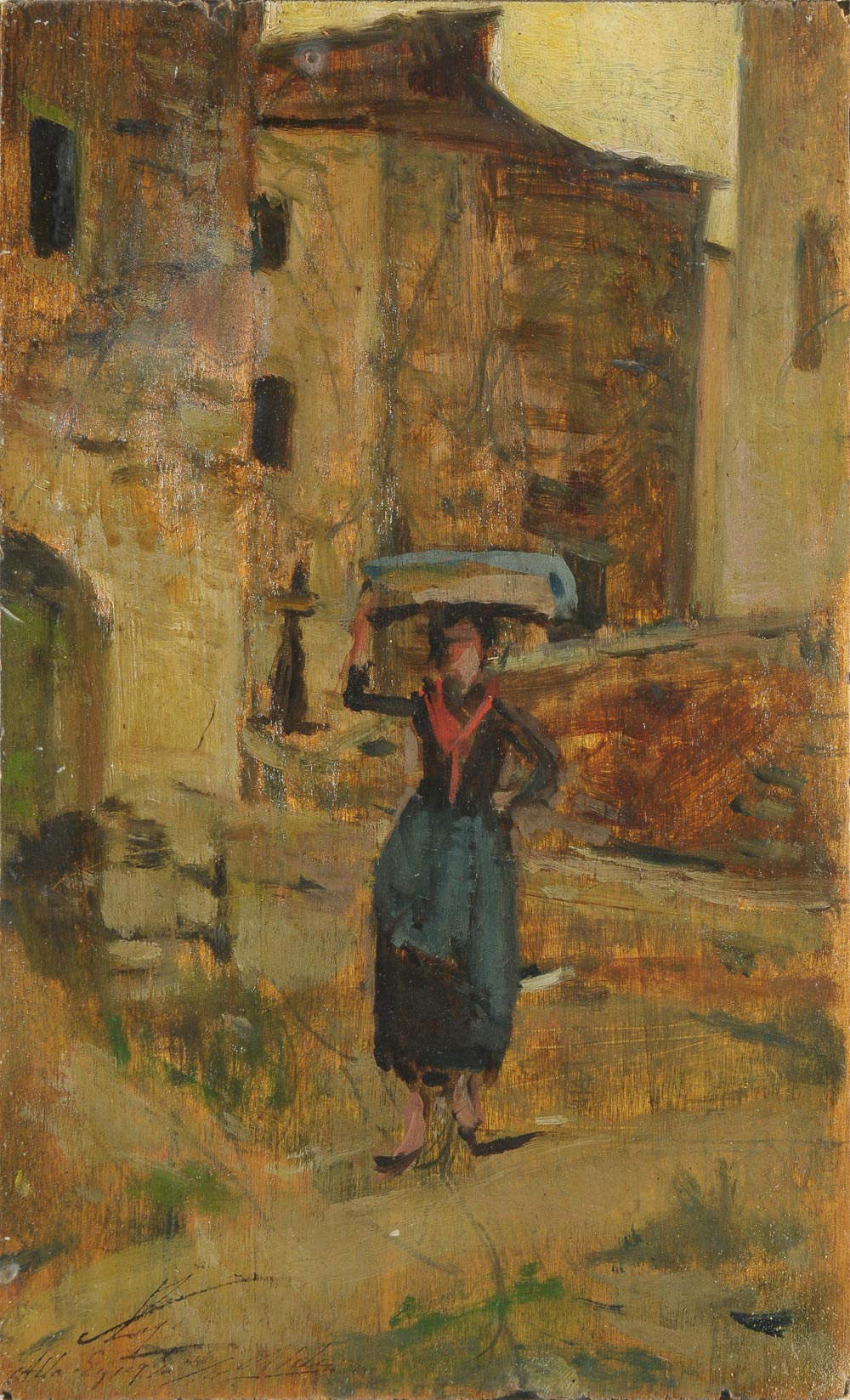
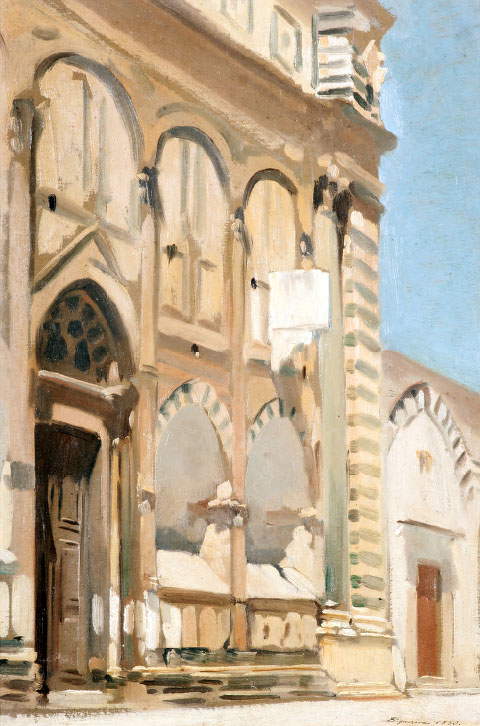
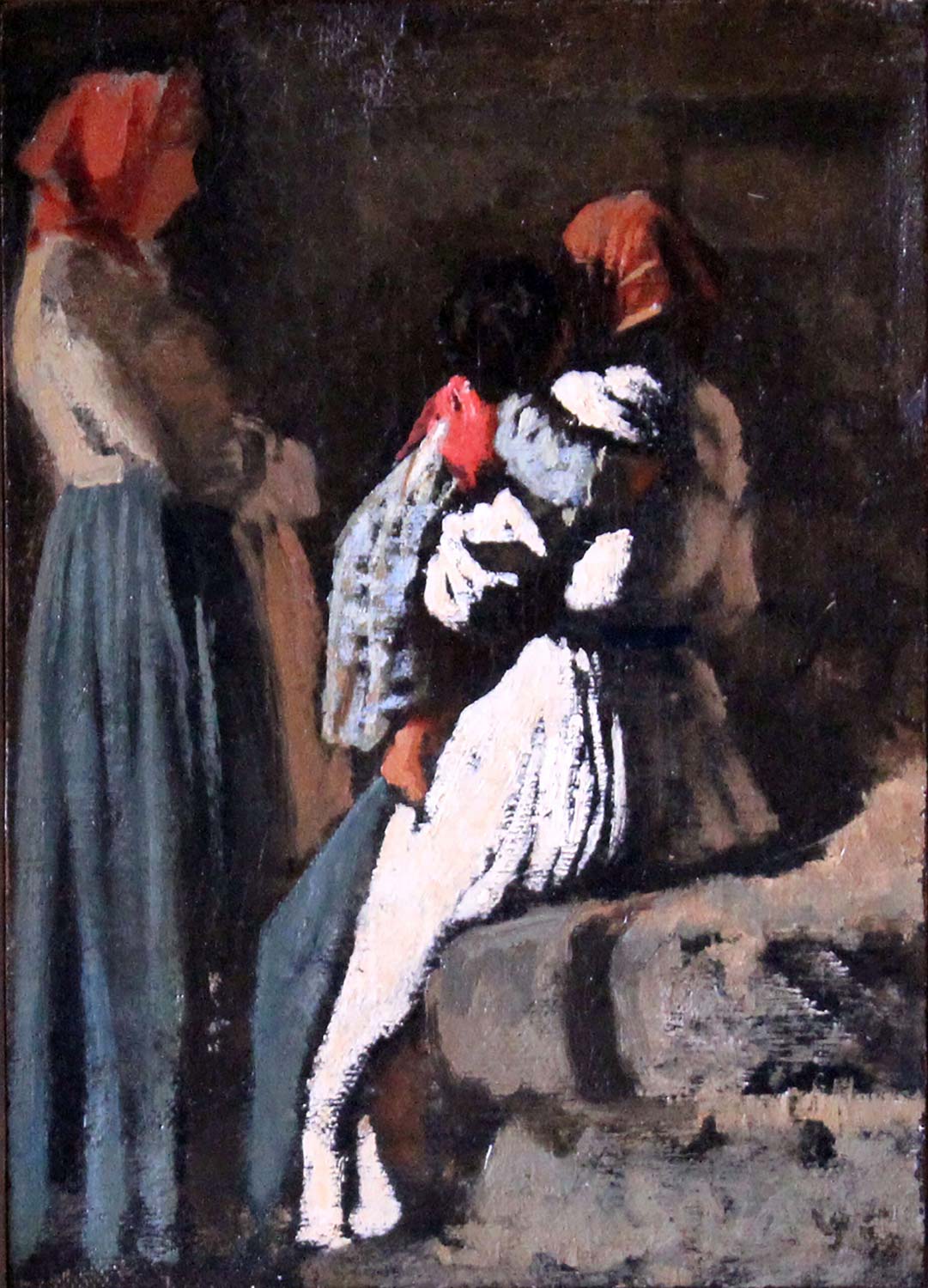
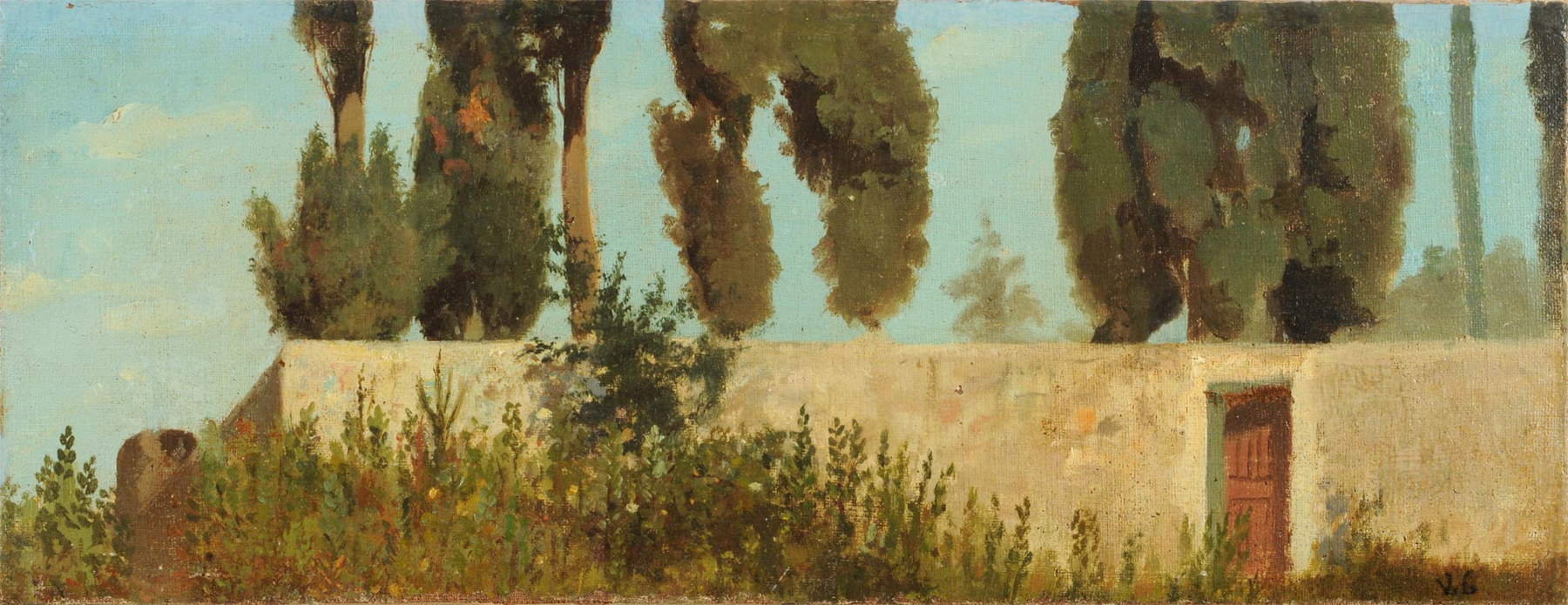 Vincenzo Cabianca,
Vincenzo Cabianca,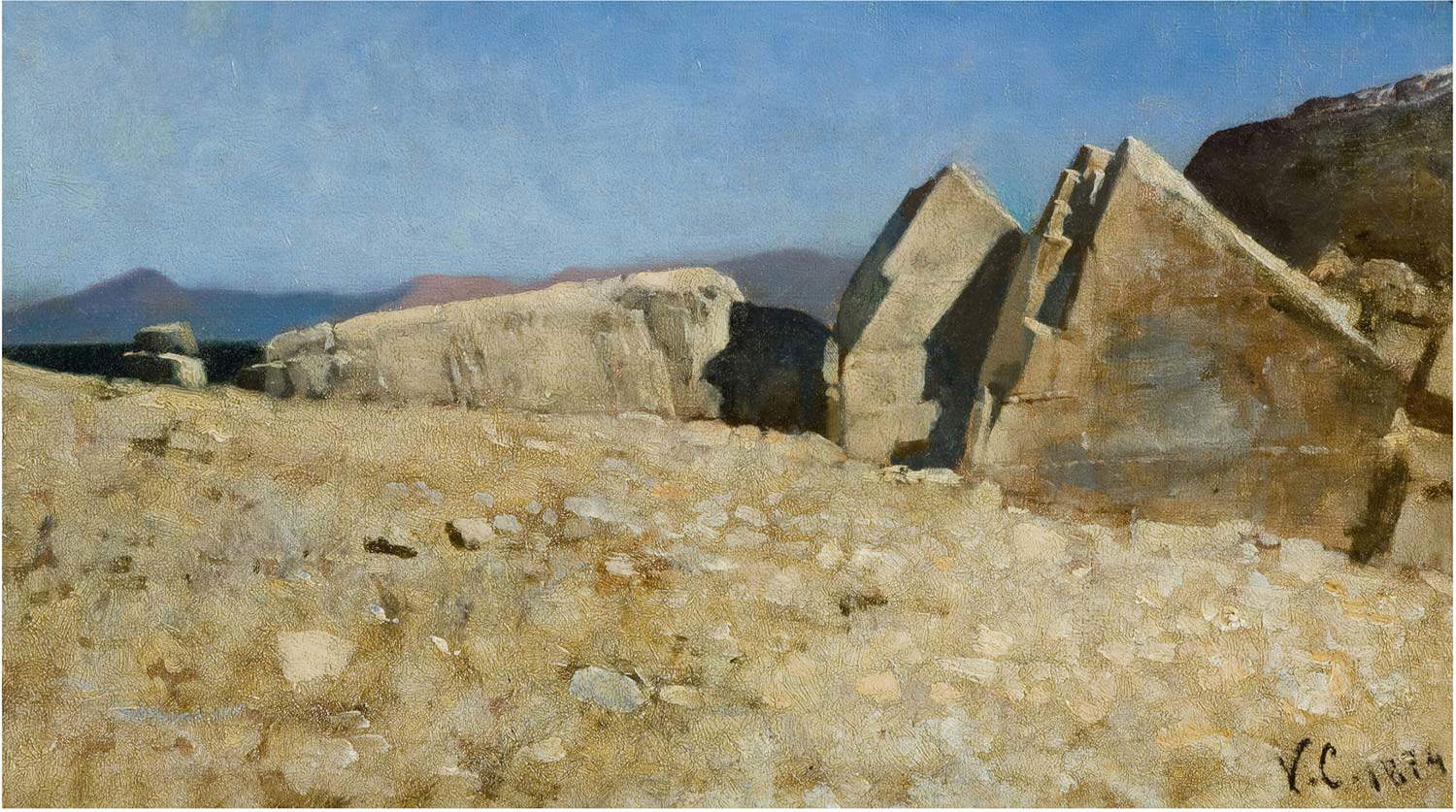
The narrative will then continue in the exploration of the extraordinary innovations proposed by the Macchiaioli in the Italian art scene of the time, with works signed by artists such as Telemaco Signorini, Giovanni Fattori, Giuseppe Abbati, Silvestro Lega, Vincenzo Cabianca, and Raffaello Sernesi . Set against the backdrop of an Italy engaged in the final stages of the Risorgimento, the exhibition aims to analyze the Macchiaioli revolution in its most diverse aspects, from its origins in the second half of the 1950s to the 1970s, when the group’s pictorial research, having lost the harshness of its early trials, acquired a more relaxed style, open to the more subdued naturalist tendency that was spreading in Europe. The Macchiaioli were a phenomenon of European dimension, not something provincial as critics have often presented, but rather a fundamental part of a new European trend toward reading landscape from life and realism.
There are five sections: it begins with The Birth of Painting En Plein Air, which recounts the evolution of painting “from life from life,” starting with the experience - invaluable even for Italian artists - of the painters of the cenacle of Barbizon. Along with some of their works, works by Italian artists who drew on and contributed to the Barbizonniers’ research (such as, for example, Giuseppe and Filippo Palizzi) will also be exhibited, as well as by painters important for the future developments of landscape painting, such as Antonio Fontanesi. The section closes with a work by Serafino De Tivoli who, thanks to the knowledge he acquired during a trip to Paris, will bring important news and confirmations to his colleagues at the Michelangelo Café.
The second section, What is the stain, clarifies “the stain” from a technical point of view, illustrating the innovations introduced by the movement that arose around the tables of the Caffè Michelangelo. Through the works of some of the great protagonists of the group, there is a way to approach the Macchiaioli technique, its salient features and the reasons for its revolutionary charge. Also not to be missed are the caricatures that the frequenters of the Florentine café liked to make of each other. An extraordinary historical testimony, necessary to understand the climate in which the Macchiaioli affair developed. The third section, The Landscape, brings together a series of small-large Macchiaioli landscapes, made in different years. The works on display also offer an opportunity to reflect on the places of the Macchia (the Florentine countryside, the coasts of Castiglioncello and its surroundings, the locations between Tuscany and Liguria...) and, above all, to emphasize the relationship between Macchia painting and photography (a fundamental relationship for the developments of the new painting of the real). In the fourth section, The Genre Scene, the narrative of the everyday-among female workers in the fields, cattle markets and monks strolling in a city cloister-is certainly one of the themes on which macchia painting was most exercised, with consistently innovative results. Works such as Women Working in the Fields by Cristiano Banti (Palazzo Foresti, Carpi) and Contadina al Gabbro by Silvestro Lega (private collection) well introduce the visitor to this pictorial genre, making the modernity of the Macchiaioli interpretation very evident. Finally, the last section, The Legacy of the Macchia, analyzes the later production of the main protagonists of the movement, also taking into consideration their legacy. A selection of late works testify to the paths taken by the three great masters. But also exhibited alongside their works are some masterpieces by those artists who first picked up their teaching and followed in their footsteps, what we might call their first-generation pupils, such as Nicolò Cannicci, the Gioli brothers and the Tommasi.
Opening hours: Monday through Friday from 9:30 a.m. to 7:30 p.m., Saturday and Sunday from 9:30 a.m. to 8:30 p.m. Last admission 30 minutes before closing time. Ticket: full price € 12.00 (weekends and holidays); full price € 10.00 (weekdays); reduced price € 8.00 (every day of the week) young people up to 14 years old, over 65, groups minimum 10 maximum 25 people, students, university students, journalists, conventioned; schools € 5.00; free up to 6 years old. Open ticket € 15.00 (includes skip-the-line admission). Visit reservations: tel. +(39) 351 8403634 - +(39) 333 6095192 - prenotazioni@navigaresrl.com.
 |
| An exhibition on the Macchiaioli and en plein air painting in Gubbio |
Warning: the translation into English of the original Italian article was created using automatic tools. We undertake to review all articles, but we do not guarantee the total absence of inaccuracies in the translation due to the program. You can find the original by clicking on the ITA button. If you find any mistake,please contact us.